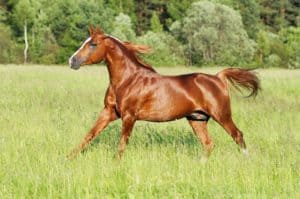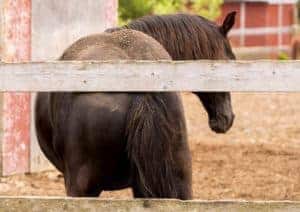Environment: Development and Persistence of Parasites
- Posted by Multiple Authors
Share:

In terms of disease risk, development essentially describes the numbers of new larvae that appear in the environment, whereas persistence determines how long they stick around. The horse’s environment is really one of the most critical elements to consider if you’re going to construct an effective anti-parasite strategy.
Parasitic enemies such as strongyles (bloodworms), ascarids (roundworms), and tapeworms thrive in a horse’s environment – their stalls, pastures and paddocks. For example, any third-stage strongyle larvae present on pasture in autumn will probably survive just fine through the whole winter, even in ice and snow. The key to exploiting environmental events is understanding when and how Mother Nature works – for us or against us – in our perpetual battle against worms.
Written by:
Multiple Authors
Related Articles
Stay on top of the most recent Horse Health news with












